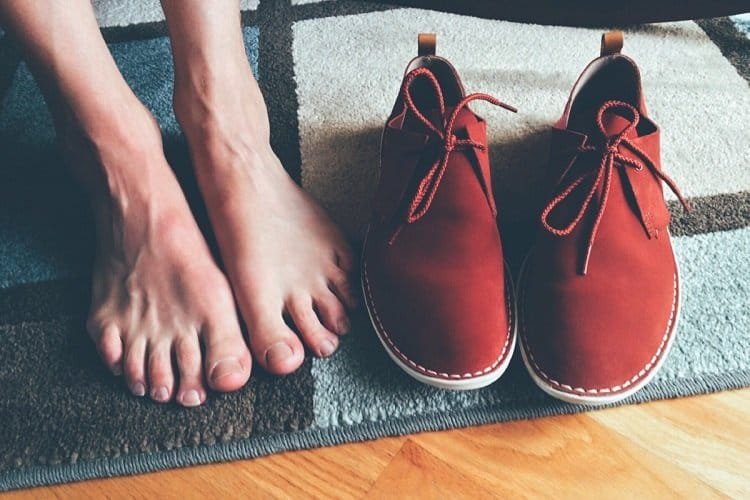If you have frequented the podiatrist’s office for chronic foot pain, the topic of orthotics has likely come up amongst other treatment and management suggestions like ice therapy, massage, and rest. Interesting new research is shedding light on the cost and efficacy of custom-made versus over-the-counter orthotics, however, turning previously-thought notions on their head.
What Do Orthotics Do?
In many ways, orthotics compensate for musculoskeletal deficiencies or poor body mechanics that have resulted in some type of lower extremity injury. For example, insoles designed specifically for plantar fasciitis provide arch support and cushioning to offset stress on the injured plantar fascia ligament that runs along the bottom of the foot caused by overpronation.

Orthotics exist for a variety of foot conditions in addition to plantar fasciitis including hammer toes, bunions, fallen arches, metatarsalgia, heel pain, and overlapping toes. The primary goal of wearing an orthotic aid in your shoe or on your foot is often to relieve pain and discomfort associated with certain conditions. Orthotics also play an important role in:
-
Realigning the structure of the foot and ankle
-
Improving the anatomical efficiency of the lower extremity
-
Reducing foot fatigue
-
Absorbing the shock of the foot’s impact with the ground
-
Supporting the arch of the foot
-
Adding cushioning to painful trigger points (like the heel)
-
Prevent cascading leg and back pain
How Do You Find the Right Orthotic?
While self-diagnosing a foot issue may feel right in the short-term, if chronic pain persists past several weeks, or if it is accompanied by swelling, numbness, tingling, or weakness, it is critical you see a doctor or foot specialist who can evaluate what underlying issue may really be causing your symptoms. Foot pain can affect your biomechanics more than you know, causing you to make seemingly imperceptible adjustments in the way you walk and exercise; this can then have a domino effect on your legs, knees, hips, and back. Correctly diagnosing your foot injury sooner rather than later can make a huge difference in your activity levels.

A podiatrist will typically discuss your medical history, regular activity and exercise levels with you as well as conduct a manual exam and any imaging tests that may be necessary. If orthotics are recommended as part of a comprehensive treatment plan, your doctor will discuss with you whether you should get an aid that is custom-made for your foot (often much more expensive) or whether you can benefit from a cheaper, over-the-counter alternative.
Custom orthotics are molded to the exact imprint of your foot and aim to redirect and reduce certain motions that occur during your specific gait cycle. They can run in the hundreds of dollars as far as cost is concerned, and take a little longer to acquire since they are manufactured to order. Over-the-counter orthoses, on the other hand, can be found online and in most big box stores and drug stores. Some, like plantar fasciitis insoles, can be trimmed down for a more custom fit for your shoe.
What Does the Research Say?
The most recent meta-analysis on the effect of orthoses for plantar fasciitis pain was published in the British Journal of Sports Medicine. A systematic review of 20 different studies examining 8 different types of foot orthoses worn by over 1,700 patients with plantar heel pain found no significant difference in short-term pain relief between custom-made ones and pre-fabricated or sham alternatives. The same went for custom orthoses and conservative treatment options – no significant difference.
What does this mean for patients? Since many health insurance benefits have strict requirements regarding coverage of orthotic aids like insoles, few actually cover them and patients end up paying large sums out of pocket for custom-made variations. If an in-depth look at multiple studies regarding the efficacy of custom orthoses reveals that they’re no more effective at addressing plantar fasciitis pain than over-the-counter options, this could mean more accessible and cost-effective treatment options for the millions of people who develop plantar fasciitis every year.

The $2.5 Billion market for foot orthotic insoles has experienced dramatic growth in the past decade due in large part to increasing rates of conditions which affect foot health like obesity, diabetes, and arthritis. Interestingly, North American populations own a whopping 45% share of the market.
The lead researchers on the study from Erasmus Medical Center in The Netherlands share that the findings indicate clinicians should practice greater discretion with patients who come in complaining of heel pain. Decisions to recommend custom-made orthotic aids should keep patient preference in mind as well as patient adherence to conservative treatment measures like stretching and strengthening the lower leg and foot muscles.
Final Considerations
So what does this mean for you, the patient, who is ready to eliminate foot pain for good? When you go to the doctor, talk about all the treatment options available to you and remember, the research has found that custom-made insoles aren’t necessarily more effective. You might be better off saving the money and trying a prefabricated alternative instead.

